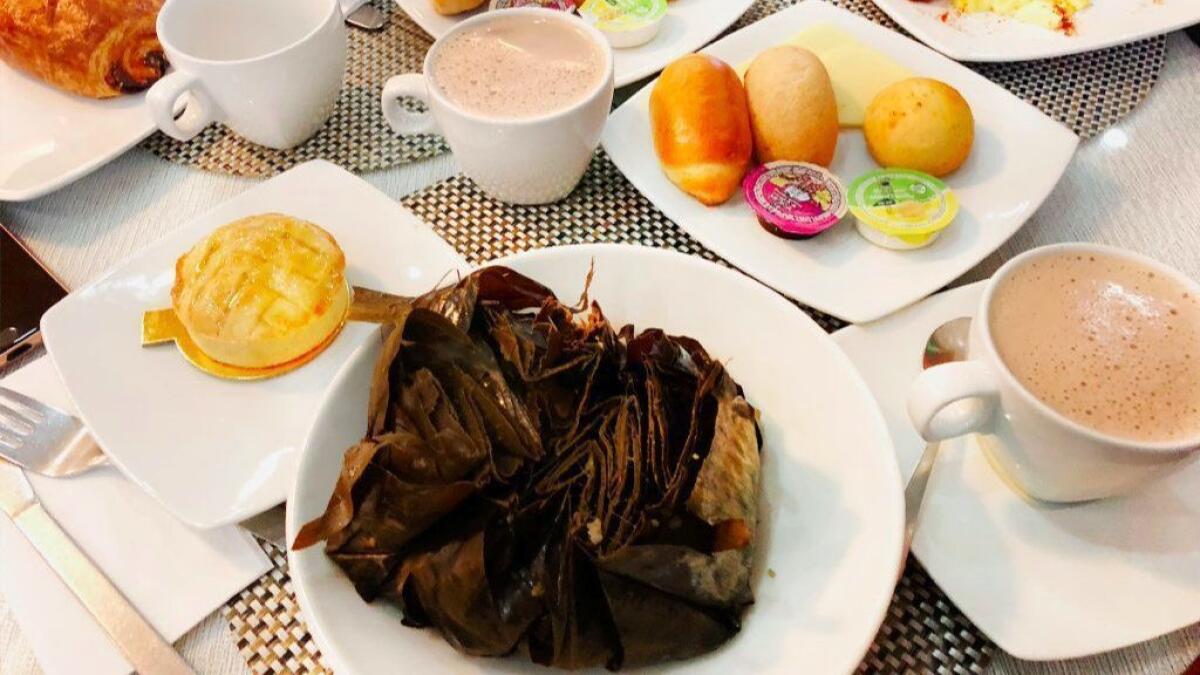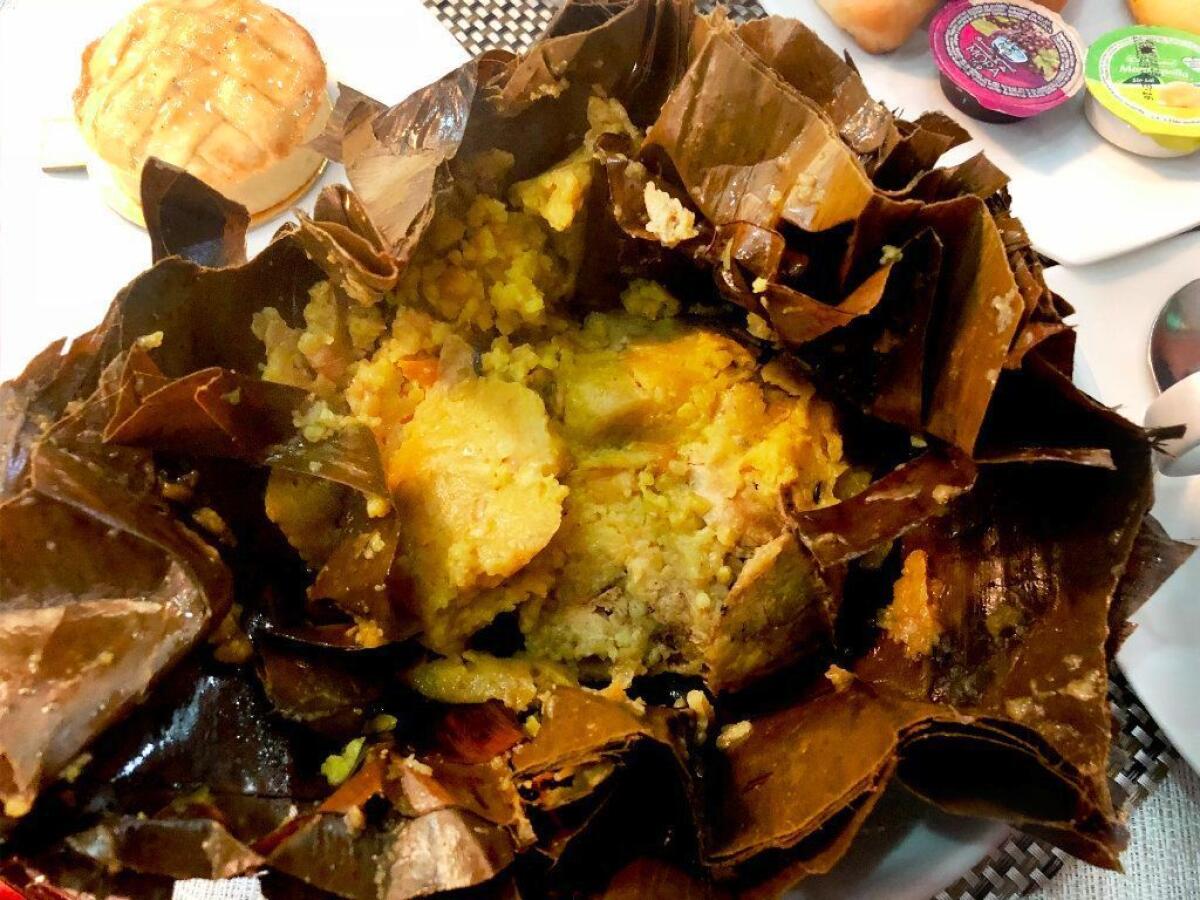Dining Dispatch: Tackling the immense tamal tolimense at Pastelería Florida in Bogotá

Reporting from Bogotá — Tamales in Los Angeles are typically of the Mexican variety, and a single one doesn’t go very far. Best to order two, possibly three, for a full meal.
In Colombia, you could make a whole meal out of one tamal. Unlike its slender Mexican counterpart dressed neatly in pale yellow corn husks, the grapefruit-sized tamal tolimense at Pastelería Florida in Bogotá is formidable and foreboding, encased in layers upon layers of waxy banana leaves that have been steamed until they turn the murky color of seaweed.
It was first thing in the morning when my two traveling companions and I arrived at the 82-year-old restaurant halfway between the Museo Nacional and the Museo del Oro, and the prospect of facing a goliath tamal right before boarding an international flight seemed daunting. I ordered one anyway.
The classic Colombian accompaniment to a tamal tolimense is hot chocolate, so I also got a mug of chocolate santafereño and, when it arrived alongside a plate of cheese, dunked the triangles into the frothy drink as the locals did. We rounded out our breakfast with an omelet, pan de chocolate, apple tart, cookies, truffles and a croissant breakfast sandwich with ham and eggs — because as Americans on vacation, we didn’t understand the concept of portion control.
The tamal arrived last, landing in front of me like a bulging present on Christmas morning. Loosening the bundle from the top and unfurling the thick leaves revealed a sticky, steaming, vegetable-studded mass of masa. Somewhere below lurked a chicken leg.

Rustic tolimense-style tamales are a regional specialty from Colombia’s Tolima department. They are traditionally made with a chicken leg, pork, carrots, peas, onions, egg and rice and are more moist and grainy and less crumbly than Mexican tamales.
There was something pleasantly tactile about the experience of working through the hefty tamal tolimense, of peeling a leaf back and using the edge of the fork to scrape up the bits smeared onto the banana leaves. The clingy consistency and the dark green wrapping reminded me a bit of the large Chinese sticky rice dumpling, zongzi, I ate at home growing up.
Bogotá, like many South American cities, is home to extraordinary street food — my favorite: piping-hot arepas that cost the equivalent of one U.S. dollar — and inventive tasting menu establishments such as Leonor Espinosa’s Leo. Opened in 1936, Pastelería Florida is neither.
The long and narrow dining room is homey and no frills, the kind of place where thin burnt-orange seat cushions are tied to the backs of knobby wooden chairs and a menu might not appear for a long while. The other diners are mainly locals, the waitresses are frazzled but friendly and the jam comes in tiny plastic cartridges. The hulking tamales are the centerpiece on practically every table.
In short, it was exactly the type of traditional, no-frills breakfast spot I’d hoped to find near the city center of this bustling metropolis.
On the way out, the restaurant’s impressive oval-shaped pastry case beckoned with pastel-colored cakes, soft bread rolls and chocolates, perfect for taking home.
Cra. 7 No. 21-46, Bogotá, Cundinamarca, Colombia. +57 1 3410340
This is an occasional feature that highlights a recent meal outside Los Angeles.
More to Read
Eat your way across L.A.
Get our weekly Tasting Notes newsletter for reviews, news and more.
You may occasionally receive promotional content from the Los Angeles Times.











